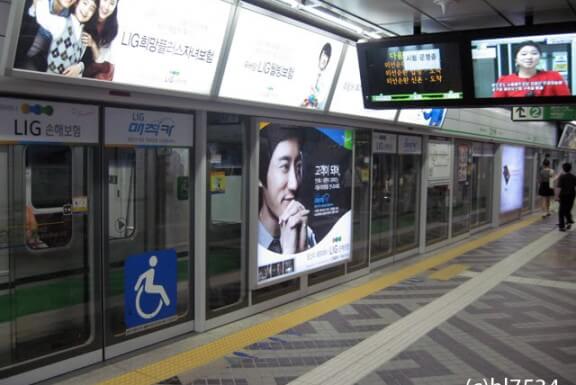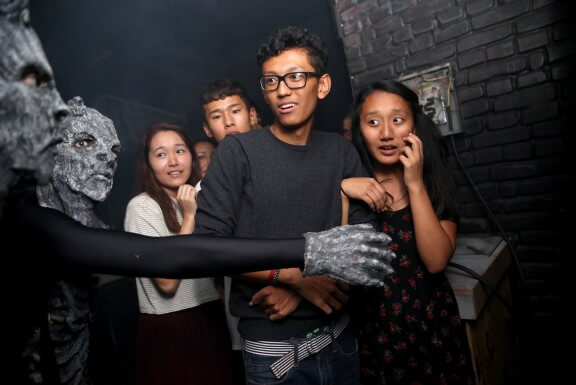 Boston’s new literary district includes more than 80 historical sites. CREDIT: Massachusetts Cultural Council
Boston’s new literary district includes more than 80 historical sites. CREDIT: Massachusetts Cultural Council
There’s John Updike’s Beacon Street home, the old Atlantic Monthly offices on Arlington, Jack Keroauc’s watering hole in the Theatre District and the place where Henry Wadsworth Longfellow got hitched.
Boston has an extensive literary history; it’s a history that is receiving renewed attention this week with the launch of the nation’s first “literary cultural district.” The idea is to make the city’s current literary community more visible while highlighting the city’s long relationship with the written word for locals and tourists alike. Literary events will be publicized; historic homes of dozens of significant authors will be highlighted.
Not everyone, however, is happy about the initiative. Take Edmond Caldwell. He’s a Netwon-based author who says there was not enough public participation in the district’s creation.
“The whole thing has been organized in a top-down and narrow way, not reflecting the needs or wishes of writers or the communities in which they live,” he said.
He says the district will accelerate the process of turning the city “more and more into a yuppie theme park” and doesn’t address the real problem: writers need to be able to afford to live in Boston. In fact, he says, the district will increase the gentrification of the city by raising property values. That will not help local wordsmiths who are trying to eek out an existence.
Larry Lindner, the coordinator of the district, however, says the program was never intended to be a public housing project.
He insists he has not received any negative feedback from writers he’s spoken to about the initiative.
“Everyone is very excited. Writers feel like it’s going to give them a home and a venue to showcase their craft.”
A web site will be launched this Thursday night that will list a calendar of literary events in the area and a map of the district and notable historic homes and haunts of notable writers.
“It has the longest and most interesting literary history in the country,” said Lindner. ” And we’re not changing that history, we’re saying here it is. Here’s a map, here are the sites, here is where the writers lived.”
Mari Jenkins, program manager for the Cultural Districts Initiative for the Massachusetts Cultural Council, meanwhile, hopes the program would increase the visibility of the current crop of Boston scribes.
“This is not just about what’s happened in the past, which is important and absolutely relevant, but it’s also about balancing that with the people who are creating work today,” she said.
Here’s the list of historic literary properties being highlighted in the new district:
1. “Poe Returning to Boston” sculpture (unveiled October 5, 2014), corner of Charles and Boylston Streets.
2. The Colored American Magazine, 5 Park Square (address no longer exists but would be just where the The Trolley Shop and Leather World are situated). First monthly publication targeting an exclusively African American readership,
3. Grave of Charles Sprague, the banker-poet of Boston in the 1800s, Central Burying Ground on Boston Common off Boylston Street.
4. Ploughshares at Emerson College,120 Boylston Street. Influential literary magazine.
5. Emerson College’s Colonial Theatre, 106 Boylston Street. Rodgers and Hammerstein literally wrote the title song to Oklahoma! in the lobby there and later won a special Pulitzer for the play.
6. The Long Path, stretching through the Common from the corner of Boylston and Tremont Streets to Joy Street, immortalized by Oliver Wendell Holmes in his Autocrat of the Breakfast Table. (Boston Common, the country’s oldest public park, is also a spot that Ralph Waldo Emerson grazed cows as a child. And Poe, who had a distaste for the transcendentalists, dismissed them as frogpondians, for the Common’s Frog Pond on which people ice skate during the winter.)
7. Jacob Wirth Restaurant, 31 Stuart Street. Written about by novelist and poet Jack Kerouac. Patrons have also included Spencer for Hire writer Robert Parker.
8. Brattle Book Shop , 9 West Street. Specializes in used and rare books.
9. Elizabeth Peabody, 15 West Street. One of Boston’s early (and powerful) female publishers,
10. Margaret Fuller residence, 486 Washington Street. Respected 19th century critic and pioneering female reporter for the New York Tribune. Helped Emerson develop the concept of transcendentalism.
11. Bronson Alcott’s Temple School, 140 Tremont Street. Bronson Alcott was a progressive transcendentalist and father of Louisa May Alcott.
12. Edward Bellamy, in his celebrated 1888 novel Looking Backward, described a utopian Boston in the year 2000 with it’s “Stores! Stores! Stores! Miles of stores!” on Washington Street. Washington Street from Temple Place to State Street.
13. Benjamin Franklin birthplace, 1 Milk Street. Newspaper man and essayist.
14. Commonwealth Books, specializing in “used~old~scarce” texts, 2 Milk Street. (A larger Commonwealth Books branch can be found on brick-paved Spring Lane, just up Washington Street a ways on the right. Commonwealth is also a publisher that goes under the name of Black Widow Press, publishing poetry and works translated from other languages.)
15. The Boston Evening Transcript, Transcript Building, Corner of Washington and Milk Streets. One of the newspapers that made up the “cradle of American journalism.” Mid 1800s through mid 1900s.
16. The Old South Meeting House, 310 Washington Street. Church not only of Ben Franklin (who was baptized there) but also Phillis Wheatley,
17. Old Corner Bookstore Building, 3 School Street. Nineteenth century internationally known literary center where book publishing was revolutionized. Authors included Harriet Beecher Stowe, Henry David Thoreau, Emerson, Longfellow, and others.
18. Newspaper Row, largely on Washington Street but also on some of the surrounding streets, once had the offices of the Boston Globe, the Boston Herald, the Boston Advertiser, the Boston Post, the Boston Journal, the Boston Traveler, and the Associated Press. Plaque at 1 Devonshire Place between 266 Washington Street and Devonshire Street.
19. Peter L Stern & Company, 15 Court Square. Antiquarian bookseller.
20. Old City Hall, 45 School Street. Legend has it that that’s the setting for Edwin O’Connor’s novel The Last Hurrah.
21. Site of Boston Latin School, founded in 1635, plaque at 45 School Street. Alumni included Ben Franklin, Cotton Mather, Ralph Waldo Emerson, John Hancock, and many other notables.
22. Omni Parker House Hotel, 60 School Street. Many literati met here regularly and some twentieth-century literary giants worked here on staff.
23. King’s Chapel Burial Ground, Tremont Street off School Street. Site of burial for The Scarlet Letter’s fictional Hester Prynne and the Reverend Arthur Dimmesdale.
24. Rosalie Stahl Center at Suffolk University, 73 Tremont Street. Home of the acclaimed literary journal Salamander and The Clark Collection of African American literature.
25. Tremont Temple, 88 Tremont Street. Hosted speakers that included Emerson, Frederick Douglass, Harriet Beecher Stowe, Dickens (for his first public reading of A Christmas Carol), and Lincoln.
26. Oliver Wendell Holmes, Sr., residence, 3 Bosworth Street. Poet and book writer (Autocrat of the Breakfast Table).
27. Orpheum Theater, off Tremont Street at the far end of Hamilton Place. Climax of Henry James’s The Bostonians takes place there.
28. “Mary Had a Little Lamb” coauthor and publisher Sarah Josepha Hale’s burial space at the Granary Burial Ground, Tremont Street between School and Park Streets.
29. Offices of the popular illustrated weekly Gleason’s Pictorial and the weekly story paper The Flag of Our Union, 101 Tremont Street.
30. Park Street Church, corner of Tremont and Park Streets. New England Society for the Suppression of Vice was founded here in 1878. Later, editor H.L. Mencken was arrested for selling “certain obscene, indecent, and impure printing…manifestly tending to corrupt the morals of youth.”
31. Houghton Mifflin, 2 Park Street. Historic offices. Margaret Rey, Rachel Carson, and others published from those offices.
32. Women’s Journal, published by women’s rights advocate and abolitionist Lucy Stone, 3-5 Park Street.
33. George Ticknor residence, 9 Park Street. Lawyer and writer known for his scholarly work on Spanish literature.
34. Boston Athenaeum, 10 ½ Beacon Street. One of the oldest independent libraries in the U.S.
35. Yvonne Pappenheim Library on Racism, 14 Beacon Street. Free lending library of more than 3,000 titles on abolitionism, slavery, social movements.
36. Congregational Library, 14 Beacon Street. Devoted to the history and archives of the Congregational Church, coextensive with much of early Boston’s literary history.
37. State House, Beacon Street. Small bookstore on the lobby level.
38. Robert Gould Shaw and the 54th Massachusetts Regiment Memorial, Bacon Street opposite State House. Large bronze relief that inspired both Robert Lowell’s poem “To the Union Dead” and Paul Lawrence Dunbar’s “Robert Gould Shaw.”
39. Little Brown, 34 Beacon Street. (Publishers of Little Women.) Historic offices.
40. Henry Wadsworth Longfellow wedding place, 39 Beacon Street.
41. William Hickley Prescott residence, 55 Beacon Street. One of the first English-speaking historians to write about the Spanish empire; heralded as the first American scientific historian.
42. Henry Adams birthplace, Mount Vernon Place (exact address no longer exists). Pulitzer-prize winning author, journalist.
43. New England Watch and Ward Society, 41 Mount Vernon Street. The society sponsored censorship that promoted the phrase “Banned in Boston.” The building until recently housed Beacon Press, a department of the Unitarian Universalist Association and an independent publisher of serious fiction and non-fiction by James Baldwin, Marian Wright Edelman, Cornel West, Michael Patrick MacDonald, Rashid Khalidi, Mary Oliver and others.
44. Sarah Wyman Whitman residence, 77 Mount Vernon Street. Designed covers for famous authors at Houghton Mifflin. Also the site of an annual competition dinner between Little Brown, Houghton Mifflin and the Atlantic Monthly Press for who sold the most books in the previous year in five categories.
45. Maria Stewart and David Walker, 81 Joy Street. Stewart was a black abolitionist whose speeches were the first publically delivered talks by an American woman on politics and women’s rights. Walker, in 1829, published “Appeal to the Colored Citizens of the World,” which decried slavery and racial hatred.
46. William Cooper Nell, 3 Smith Court. National historic site commemorating the African-American writer and abolitionist.
47. Museum of African American History, 46 Joy Street.
48. Lois Lowry residence, 39 Hancock Street. Wrote The Giver, the first dystopian novel for young readers.
49. Henry David Thoreau childhood home, 4 Pinckney Street. Wrote Civil Disobedience and other seminal 19th-century works.
50. Louise Imogen Guiney residence, 16 Pinckney Street. Nineteenth- and 20th-century essayist, poet, and editor.
51. Louisa May Alcott home when she was about 20, 20 Pinckney Street. Wrote Little Women and other popular 19th-century works.
52. Nathaniel Hawthorne residence, 54 Pinckney Street. Wrote The Scarlett Letter, Young Goodman Brown, and other famous 19th-century works.
53. Francis Otto Matthiessen residence, 87 Pinckney Street. Twentieth-century literary critic influential in the field of American literature.
54. John Phillips Marquand residence, 43 West Cedar Street. Wrote The Late George Apley, a satiric novel about Boston’s upper class.
55. Robert Lowell residence, 91 Revere Street. As an adult, Lowell wrote a prose piece entitled “91 Revere Street” that was published in The Partisan Review. (Later on in his life, Lowell also lived at #s 170 and 239 Marlborough Street, located with the Literary Cultural District in the Back Bay section of Boston.)
56. Josephine St. Pierre Ruffin, 103 Charles Street. Publisher of the Woman’s Era Journal, the first newspaper by and for black women.
57. Susan Paul residence, 36 West Cedar Street. Wrote the first biography of an African American published in the U.S.
58. Robin Cook residence, 16 Louisburg Square. Contemporary New York Times best-selling author and master of the medical thriller.
59. Louisa May Alcott residence, 10 Louisburg Square. She lived here in the latter part of her life.
60. William Dean Howells residence, 4 Louisburg Square. Author, literary critic, and playwright who edited The Atlantic Monthly and was known as the “Dean of American Letters.”
61. Khalil Gibran residence, 108 Mount Vernon Street (formerly called 18 West Cedar Street). Wrote The Prophet.
62. Henry James residence, 102 Mount Vernon Street. Nineteenth- and early-20th century novelist who wrote The Turn of the Screw, What Maisie Knew, and other well-known works.
63. Robert Frost residence, 88 Mount Vernon Street. American poet and poet laureate.
64. Margaret Deland residence, 76 Mount Vernon Street. Popular novelist at the turn of the 20th century, having written more than 25 works of fiction.
65. Sylvia Plath and Ted Hughes residence, 9 Willow Street. Famous and ill-fated 20th-century poet couple.
66. Richard Henry Dana, Sr., residence, 43 Chestnut Street. Poet, critic, and
Early practitioner of Gothic literature.
67. Francis Parkman residence, 50 Chestnut Street. Wrote The Oregon Trail.
68. Charles Street Meeting House, 121 Mount Vernon Street. Stronghold of the anti-slavery movement and the site of notable speeches by such people as Frederick Douglass, Harriet Tubman, Sojourner Truth, and William Lloyd Garrison.
69. Samuel Eliot Morison residence, 44 Brimmer Street. Pulitzer Prize-winning maritime author.
70. Make Way for Ducklings sculpture, Public garden near Charles and Beacon Streets. Created by Nancy Schön in 1987 as a tribute to Robert McCloskey’s Caldecott medal-winning children’s story.
71. Edward Everett Hale statue, near Charles Street entrance of Public Garden. Wrote “Man Without a Country.”
72. The Trumpet of the Swan bridge in the Public Garden. Spot at which Louis plays his trumpet in E.B. White’s The Trumpet of the Swan.
73. The Atlantic Monthly offices, 8 Arlington Street. Historic, long-time offices of the magazine that published many hugely famous Boston authors.
74. Harry Crosby residence, 95 Beacon Street. Epitomized the “Lost Generation” that came of age during World War I.
75. Al Capp residence, 122 Beacon Street. Li’l Abner cartoonist.
76. John Updike residence, 151 Beacon Street. Twentieth-century novelist, poet, short story writer, literary critic.
77. Julia Ward Howe, 241 Beacon Street. Wrote the words to “The Battle Hymn of the Republic.”
78. William Lloyd Garrison sculpture, Commonwealth Avenue Mall at Dartmouth Street. Noted abolitionist and editor of The Liberator.
79. Samuel Eliot Morrison sculpture, Commonwealth Avenue Mall at Exeter Street. (See entry for #67.)
80. Boston Woman’s Memorial, Commonwealth Avenue Mall between Fairfield and Gloucester Streets. Sculpture of Abigail Adams, Lucy Stone, and Phillis Wheatley. Adams’s important letters were published after her death; Stone was first woman in Massachusetts to earn a bachelor’s degree and also edited important publications; Wheatley was first African American poet to publish in the Colonies.
81. Dartmouth Bookstall site, Dartmouth Street between Commonwealth Avenue and Newbury Street. Made a landmark anti-censorship legal defense of Erskine Caldwell’s novel Tragic Ground in 1944.
82. Boston Public Library, 700 Boylston Street. Established in 1848, the BPL is one of the oldest and largest publicly supported libraries in the U.S.
83. Bromer Booksellers, 607 Boylston Street. Rare books.
84. Khalil Gibran Memorial, Copley Square.
85. Tortoise and Hare sculpture, Copley Square. “Slow and steady wins the race…” A reference to the Boston Marathon through the famous line from the fable.
86. Trinity Church, Copley Square. Contains a stained glass window designed by Boston artist Sarah Wyman Whitman, who also designed book covers for Houghton Mifflin Publishers for authors Holmes, Jewett, Longfellow, and others.
87. Houghton Mifflin Harcourt, 222 Berkeley Street. Large Boston publisher with a long history stretching back to the 19th century.
88. Ritz-Carlton Hotel (now the Taj), corner of Arlington and Newbury Streets. Guests (including bar guests) included Eugene O’Neill, Sylvia Plath, and Anne Sexton.




















